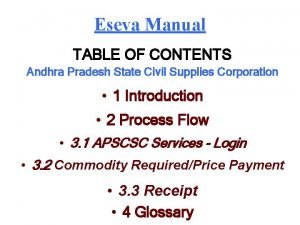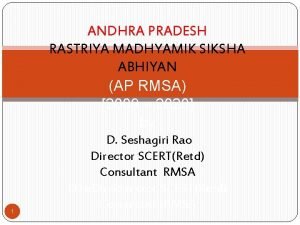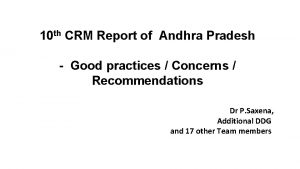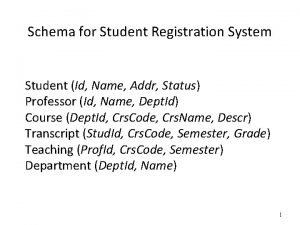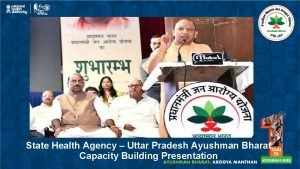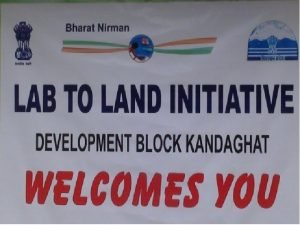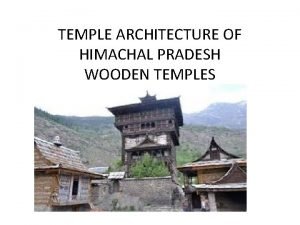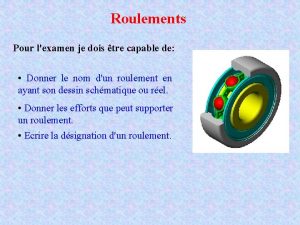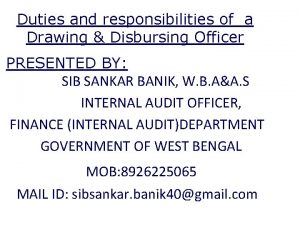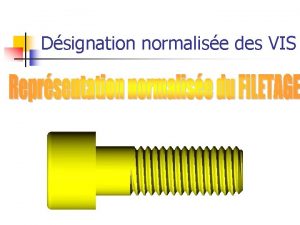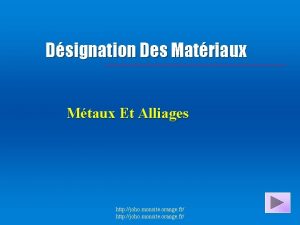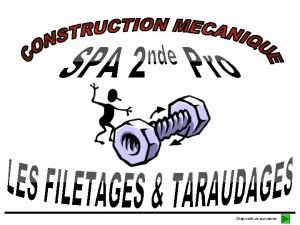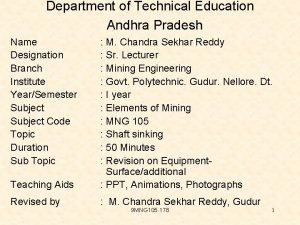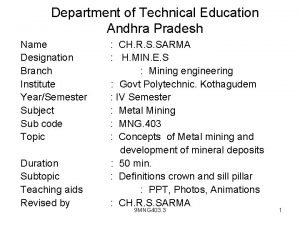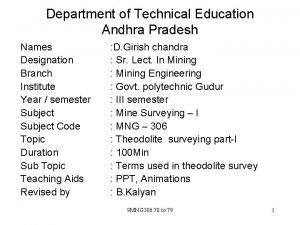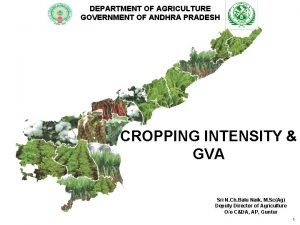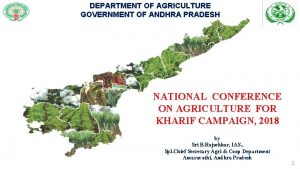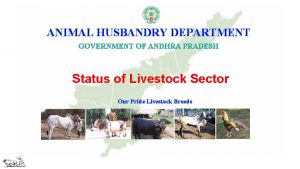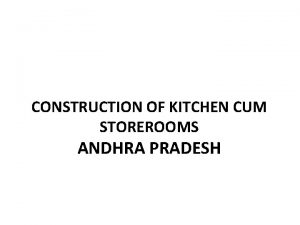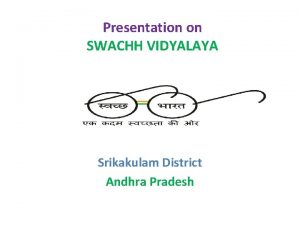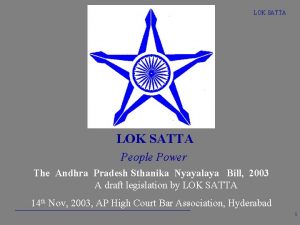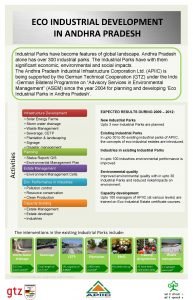Department of Technical Education Andhra Pradesh Name Designation
























- Slides: 24

Department of Technical Education Andhra Pradesh Name Designation Branch Institute Year/Semester Subject Sub Code Topic Duration Sub Topic Teaching Aids Revised By : G. Satya Narayana : Sr. Lecturer of Mining Engineering : Govt. Polytechnic, Bellampalli : III Semester : Methods of Working Coal I : MNG 304 : Thick Seam Mining : 100 Min : Explain the method of inclined slicing with caving : Diagrams, PPTs : G. Satya Narayana SL/MNG, GPT(BPL) 9 MNG 304. 68 to 69 1

Objectives On the completion of this topic you would be able to know • Explain the method of Inclined slicing with caving 9 MNG 304. 68 to 69 2

Recap • List the principles of working thick seams • List and explain the special methods • List the applicabilities of inclined slicing with caving 9 MNG 304. 68 to 69 3

Introduction • In India, seams more than 4. 8 m thick are considered as thick seams. • In the former USSR, Poland former Yugoslavia seams more than 3. 5 m thick are known as thick seams. • In England, seams more than 1. 83 m thick are categorised as a thick seams (Bottrill, Lewis and Stace, 1977). 9 MNG 304. 68 to 69 4

• In France, Rumania, Canada and Australia, the lower limit of thick seams is taken at 4 m (Ghose and Singh, 1977; Schweitzer, 1977). • It will, thus be seen that there is no standard definition of thick seams. 9 MNG 304. 68 to 69 5

• Different countries have adopted different lower limits for categorizing' thick seams. • The guiding principle has generally been to fix the lower limit of a thick seam as the thickness up to which a seam could be extracted in one lift (pass) with the available equipment and technology. 9 MNG 304. 68 to 69 6

• Thick seams are found in many countries, e. g. , the former USSR, France, Spain, China, former Yugoslavia, Canada and India, etc. • In India, over 60 per cent of all known coal reserves (proved, indicated and inferred) are contained in thick seams, • Some of which are nearly 30 m thick; one exceptionally thick seam in Singrauli coalfield is 162 m thick. 9 MNG 304. 68 to 69 7

• Thick seams add to the reserve of coal and lend themselves well for working by opencast mining. • But if, on the other hand. thick seams have to be mined by underground methods, the mining of such seams is beset with numerous problems. – e. g. , strata control, – spontaneous heating, etc. resulting in loss of large percentages of coal. 9 MNG 304. 68 to 69 8

Inclined Slicing with Caving • In inclined slicing, slices are taken parallel to the roof and floor of the seam and may be worked both in ascending order or in descending order. • Inclined slicing in ascending order must be done in conjunction with stowing, whereas in descending order the slicing may be done with or without stowing. • The method of mining may be bord and pillar or longwall. But longwall is universally preferred. ) 9 MNG 304. 68 to 69 9

• Inclined slicing with caving in descending order is done by longwall retreating method. • Longwall method facilitates (i) ease of strata control and (ii) early settlement and compaction of rock which permits. early opening up of lower slices. – Also with early settlement of rocks, the risk of fire is very much reduced. 9 MNG 304. 68 to 69 10

• As the longwall method enables complete removal of coal without leaving any remnants or stooks, no localized concentration of stress has to be encountered in lower slices. • At gidi 'A' colliery (Karanpura coalfield) were carried out with the help of French mining engineers for extraction of a thick coal seam without stowing. 9 MNG 304. 68 to 69 11

• An important feature of the French method is that the entire thickness is extracted by caving in suitable slices starting from the roof and proceeding to the floor in a descending order. • The natural roof of the top slice (first slice) is allowed to collapse • and rest on iron wire netting which serves as artificial roof for extraction of subsequent slices till the bottom most slice coal is extracted. 9 MNG 304. 68 to 69 12

Inclined Slicing with Caving 9 MNG 304. 68 to 69 13

The broad features of working a thick seam by French method are as follows: • The thick seam can be extracted if it is virgin with nearly regular thickness and has a roof which caves regularly when the supports are withdrawn. • The method is therefore well suited to roof of bedded sand stone and for a seam at 60 m depth or more. Seam gradient should not exceed 35° (1 in 1. 4). • The method employs longwall advancing or retreating manner of coal extraction. 9 MNG 304. 68 to 69 14

• In a thick seam, say 12 m thick, each slice may be 2. 4 m • thick so that in the inclined slicing method 5 slices are available. • The first is the top most slice near the roof. • Operations of coal cutting, blasting, roof support, conveyor shifting, etc. are carried on in each slice. • It is however possible to avoid such operations in one of the slices and skip over the slice by going over to the slice below the slice which is thus skipped over is called "sub level". 9 MNG 304. 68 to 69 15

• Coal of the sublevel is taken when it collapses after cabin of the slice below it. • Sublevel caving is possible in "Inclined slicing method" as well as "horizontal slicing method". • Gate roads have to be formed in the virgin seam for access to long wall face in each slice and they serve the purpose of transport, ventilation, material suppliers, etc. • Iron wire netting in the form of rolls and flat M. S strips for strengthening the wire netting are used. 9 MNG 304. 68 to 69 16

• Before installing any machinery, roof supports and commencing coal extraction of top slice, the wire netting is spread on the floor of top slice and suitably anchored in the gate roads • Chain conveyor and friction props are installed in their places over the wire netting • Friction props or hydraulic props with cantilever steel bars have to be used for support as timber props and bars may not have sufficient strength for foot control in this method 9 MNG 304. 68 to 69 17

• With the normal coal cutting, drilling, blasting, conveyor shifting, etc. the longwall face is advanced and the roof supports withdrawn to induce the roof to cave in. • Extension pieces are added to the wire netting to keep it within 1 m of the longwall face all the time. • When the roof caves in, its broken rocks rest on the wire netting. 9 MNG 304. 68 to 69 18

• This wire netting which is anchored in gate roads of top slice serves as the roof of the 2 nd slice when the latter is being extracted and mining operations during extraction of 2 nd slice are carried on under this artificial roof of wire netting 9 MNG 304. 68 to 69 19

• Roof of 2 nd slice is safe compared to that of first slice as there is no danger of roof collapse. In this way 3 rd and lower slices are extracted. • The principle behind the French method of extraction is that when the roof caves after extraction of first slice and rests on top of the flexible wire netting the dynamic and unpredictable nature of the roof is lost. • In second and subsequent slices the roof on the wire netting consists of a dead weight and is thus much more reliable and easier to handle. 9 MNG 304. 68 to 69 20

Summary After completion of this topic you learnt • Explain the method of Inclined slicing with caving 9 MNG 304. 68 to 69 21

Quiz 1. The inclines slicing method is used in the following case(s) a) The roof is cavable b) Inclination is more than 300 350 c) Coal may be hard d) All the above 9 MNG 304. 68 to 69 22

Quiz 2. The inclines slicing method slices are taken a) Perpendicular to floor and roof b) Inclined to roof and floor c) Parallel to roof and floor d) All the above 9 MNG 304. 68 to 69 23

Frequently Asked questions 1. Explain the method of Inclined slicing with caving 9 MNG 304. 68 to 69 24
 Gvmc building setbacks
Gvmc building setbacks Eseva andhra pradesh
Eseva andhra pradesh Sarva shiksha abhiyan andhra pradesh
Sarva shiksha abhiyan andhra pradesh Cm dashboard madhya pradesh
Cm dashboard madhya pradesh Eaushadhi andhra pradesh
Eaushadhi andhra pradesh Directorate of technical education karnataka
Directorate of technical education karnataka Student id name department name
Student id name department name State health agency uttar pradesh
State health agency uttar pradesh Introduction of himachal pradesh
Introduction of himachal pradesh Nat purwa
Nat purwa Matri shakti bima yojana
Matri shakti bima yojana Mdm mp govt.in
Mdm mp govt.in Art and craft of arunachal pradesh
Art and craft of arunachal pradesh Pent roof style temple in hp
Pent roof style temple in hp Fire hose reel signage standards
Fire hose reel signage standards Agro climatic zones of himachal pradesh
Agro climatic zones of himachal pradesh Language of uttar pradesh
Language of uttar pradesh M.p. state highway act
M.p. state highway act Name three lines
Name three lines Film crew job descriptions
Film crew job descriptions Symbole roulement
Symbole roulement Drawing and disbursing officer meaning in telugu
Drawing and disbursing officer meaning in telugu La désignation
La désignation 25 cr mo 4 désignation
25 cr mo 4 désignation Trou taraudé débouchant
Trou taraudé débouchant

